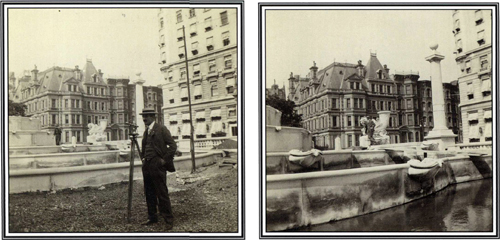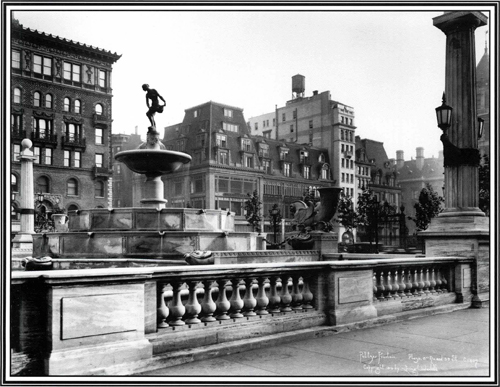
The Pulitzer Fountain
What to do about the undeveloped asphalt-lined open area in front of The Plaza had been a topic of debate among municipal planners as early as 1898, but it was not until the 1911 death of newspaper publisher Joseph Pulitzer that a formal design took shape. Pulitzer had bequeathed fifty thousand dollars to the city “for the erection of a fountain … preferably at or near the Plaza entrance at 59th Street.…” Proponents of the City Beautiful movement (which espoused grand civic architecture in public spaces for the ennoblement of the populace) suggested a fully redesigned space to accommodate it, loosely based on the Place de la Concorde in Paris. A competition was held and won by Thomas Hastings, of the architectural firm Carrère and Hastings, whose final plan closely adhered to the City Beautiful model: two semicircular islands, anchored on one end by Saint-Gaudens’s Sherman Monument and by the fountain on the other.
Work began in 1914 with the realignment of the Sherman Monument so that it would fit into the overall symmetric design. Austrian sculptor Karl Bitter was commissioned to fashion an allegorical female figure to top the fountain, and he began work on a statue of Pomona, Roman goddess of abundance, but died just after completing a two-foot model; the final work, executed in bronze and titled Abundance, was finished by two of his assistants, Karl Gruppe and Isidore Konti, and officially dedicated in May 1916.
Here, an engineer inspects the project’s progress. Here, the completed fountain, surrounded by balustrades and Doric columns, which were later removed during a renovation in the 1930s.

